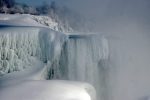ohammersmith wrote:Also is there a way to get the data out of this and do my own graph? Rescan only shows up to 40 L/min, which is bizarre because the expected leak rate of the on the Liberty at my pressure (12cm H2O) is supposed to be 40 L/min +/- 6 L/min, so I think the nominal leak is somewhere around 64 L/min.
Yes, actually fairly easily, providing you have the expertise to dissect files and manipulate data. Two approaches you can use, one with EDFBrowser.exe, and the other with edf2ascii.exe.
EDFBrowser is the easier way to look at the data. Google to download a copy. It's a freebie program w/ no adware or nag screens or any other such crap. The file you want to look at is xxxxxxxxxxxxx_PLD.edf. where xxxxxxxxxxxxxxx is the date and time the file was created. It's in the DATALOG directory of the card. When you open up the file with EDFBrowser you'll see a dialog that lists all the data signals in the file. Select Leak, click on add, then click the display button. Play around with the timescale and amplitude settings until you get a good readable graph. There's a crosshair option that will let you read out the exact values. Also, the raw data on the card is in L/sec so you'll have to multiply the reading by 60 to see L/min like Resscan shows. That conversion is not performed in EDFBrowser. The help file is reasonably good but the program is not the most user friendly. You can load more than one EDF file into one browser window. That way if you have multiple mask times during the night you can see them all on one timeline, just like in Resscan.
The other approach is to get a copy of edf2ascii.exe. It's a little command line program that extracts all the data out of the EDF file and converts them into CSV files, which you can then open up with Excel or Lotus 123. You will have to look at the info from the signals file and header file to assemble a complete spreadsheet of the data with column headers. You'll also have to calculate the time from the raw data and create your own chart of the leak numbers. The plus of this approach is you have the real raw numbers in front of you in a very readable form. You can do the L/sec to L/min conversion in the spreadsheet and graph the L/min data. To see data from multiple mask times in one graph you'll have to process each EDF file separately and then combine them into one spreadsheet page.
Whichever approach you decide to go with, do what you can and if you have questions send me a PM. I'll try to help as much as I can. At this point I have no idea of your expertise level in doing such things, but you mention CSV so obviously you have some knowledge of files and data manipulation. How comfortable are you in pursuing either of the above approaches? I hope quite a lot, otherwise you're up the proverbial creek with a busted paddle for getting what you want to see.
Resscan really only does two things for us. One, it puts the data into a pretty format to look at with reasonably good display options. The other is it automatically assembles separate files from one 24 hour period into a single display. It is totally dumb as far as data massaging goes. It does absolutely nothing to the data.















